![当代国外语言学与应用语言文库·认知语义学(卷2):概念结构中的类型及过程 [Toward a Cognitive Semantics(VolumeⅡ):Typology and Process in Concept Structuring]](https://pic.windowsfront.com/11078697/rBEHaFBJzM4IAAAAAAE0T3wC0A8AABFlgCKnSUAATRn891.jpg)

具体描述
编辑推荐
《认知语义学》(两卷本)为认知语言学创始人、美国语言学家Leonard Talmy倾尽心血的集大成之作。两卷本奠定了认知语义学的理论基础,是语言学领域,尤其是认知语言学领域研究者的必读之作。《认知语义学(卷Ⅱ):概念结构中的类型及过程》为两卷本的第二卷,主要描述概念构建过程中呈现的类型学和结构特征。第一卷《认知语义学(卷Ⅰ):概念结构系统》主要研究概念的构建。
内容简介
《认知语义学》(Toward a Cognitive Semantics Ⅰ&Ⅱ,2000,the MIT Press.以下简称“本书”或“该书”)为认知语言学创始人、美国语言学家Leonard Talmy倾尽心血的集大成之作。本书奠定了认知语义学的理论基础,是语言学领域,尤其是认知语言学领域研究者必读之作。该书原创性强,各章理论自成体系,且包含多种理论系统。全书基于大量的语料,理论基础牢固。该书不仅对语言学领域内的分支(尤其是语义学、句法学、类型学等)具有方向性的带领作用,而且对人类学、文学(尤其是叙事学)、心理学、哲学、文化研究、神经科学及人工智能等学科中的话题也有重要影响。此书使作者一举成为举世公认的认知语言学创始人。《当代国外语言学与应用语言文库·认知语义学(卷2):概念结构中的类型及过程》的核心是“概念结构系统”。作者在卷I和卷II的副书名中均使用了structuring一词,表示概念结构并不是一个静态的结构系统,而是通过不同的认知过程“构建”(structuring)而成。
内页插图
目录
IntroductionPART 1 TYPOLOGICAL PATTERNS IN THE REPRESENTATION OF EVENT STRUCTURE
Chapter 1 Lexicalization Pattems
Chapter 2 Surveying Lexicalization Patterns
Chapter 3 A Typology of Event Integration
Chapter 4 Borrowing Semantic Space: Diachronic Hybridization
PART 2 SEMANTIC INTERACTION
Chapter 5 Semantic Conflict and Resolution
Chapter 6 Communicative Goals and Means: Their Cognitive Interaction
PART 3 OTHER COGNITIVE SYSTEMS
Chapter 7 The Cognitive Culture System
Chapter 8 A Cognitive Framework for Narrative Structure
References
Index
精彩书摘
A work that reveals different parts ofitself through time can be considered intrinsically dynamic. Examples of genres of this type are conver-sation, storytelling, a play, a film, a comedy routine, an improvisational theater performance, a mime performance, a religious ceremony, a dance performance, music, video art, and kinetic sculpture.Other works are intrinsically staac, but the experiencer can interact with them by successively directing his attention to different parts of the whole. Static works may be classed into two groups on the basis of whether or not there is a cultural convention that prescribes a particular sequence in which attention is to be directed (even though it would be physically possible to direct one‘s attention elsewhere). Works that involve such a convention include a book, a cartoon strip, a sequential fresco, and an Australian aboriginal sand tracing depicting mythic treks.
Other types of static work are designed for random access by the experiencer’s focus of attention. Examples of such works are a painting or tapestry with a number of different depicted components; a sculpture designed for viewing from different angles; an architectural structure that one can view from different interior and exterior points; and a geographic-sized art work, as by Cristo, An interesting observation emerges from this analysis, Any old tapestry or painting that in effect depicts a story by showing a number of figures and activities together suggesting a succession of events, but one that the viewer must piece together through her own self-determined sequence .of visual fixations, is as much an example ofinteractive fiction as any modern computer-based form.
The prototype requirement for narrative that it be progressional is abetted to the extent that a genre exhibits a certain one of the characteristics outlined above. This characteristic is that the genre‘s partwise succession is determined-whether by physical shifts of exposure or by conventions for directing attention-rather than being open to attentional random access.
2.1.3 The Degree of Coherence and Significance The third and final factor considered here is that of Coherence and Signiftcance. A lugh degree of coherence and significance are required for the narrative prototype. Coherence is the property that the parts of the work fit together into a sensible whole. That is, relative to the average human conceptual system, the parts of the work can be cognized together in a way that they constitute a higherlevel entity that can be assessed as a unity. A work loses coherence to the extent that parts of the work are experienced as contra-dictory, irrelevant, or random with respect to each other. Significance (in its nonneutral sense) is the property that the parts and the whole of a work can be experienced as fulfilling some purpose or mission on the part of the author.
It can be seen why a prototypical narrative requires that the factor of coherence and significance be added to the previous two factors, and that all three factors have positive values. A “work” could be prototypical in being ideational and progressional but, without coherence and significance, it would hardly qualify as a narrative. An example of this combination of values is a diary or’a chronicle, which recounts a succession of ideational events but lacks story character to the extent that the entries do not cohere. A collection of references to a succession of unrelated events-whose juxtaposition would thus not only lack coherence but also significance-would be even less of a narrative. On the other hand, to the extent that a diary is seen as someone‘s personal history or “story” or that a chronicle is seen as the history or “story” of, say, a kingdom, the recounted succession of events would be accorded a sense of coherence and purpose and so come closer to being experienced as a narrative.
……
用户评价
阅读这类严肃的学术专著,最考验人的耐心和对专业术语的熟悉程度,而这本书从名字上就散发着这种挑战性。我猜测,作者在处理“类型”和“过程”这两个维度时,必然会涉及到大量的模型构建和跨学科的参照,比如神经科学或心理学的最新发现。如果能巧妙地将这些看似宏大的抽象概念,通过具体的语言实例(无论是词汇、句法还是语用层面)进行有效锚定,那这本书的价值就体现出来了。我关注的是,在探讨“过程”时,它是否能有效地解释语言的动态性——即概念是如何在交流中被实时建构、协商和演变的,而不是被视为静态的知识库。这要求作者必须具备极高的概括能力和归纳能力,才能在海量数据和理论假设中提炼出具有普适性的规律。这种对复杂系统动态性的捕捉,往往是区分优秀认知研究和一般性描述的关键所在,也决定了读者在阅读过程中需要不断地进行“心智模拟”才能跟上作者的思维节奏。
评分我注意到这套文库是系列出版的第二卷,这通常意味着前一卷已经奠定了坚实的理论基础,而本卷则可能是对核心机制进行深入细化和拓展。这种卷册的设计,本身就说明了作者对该主题复杂性的深刻认识,知道单一平面叙述无法穷尽其内涵。我更偏向于那些能够将抽象理论“视觉化”的著作,尽管这是一本语言学著作,但我希望它能通过精妙的图示、逻辑图谱或类比,帮助我们构建起对“概念结构”这一无形之物的具象化理解。毕竟,认知语义学的核心价值就在于将不可见的思维活动,转化为可分析、可讨论的结构。这种对“结构化表达”的追求,是我衡量一本认知科学类书籍成功与否的重要标准。如果它能清晰地勾勒出认知运作的流程图,那么它将不仅仅是一本理论书,更是一本思维训练手册。
评分这本书的封面设计和排版真的给人一种沉静而深刻的学术气质,那种厚重感仿佛让人一拿起书就能感受到作者在语言、认知和语义领域深耕多年的积累。虽然我对书的具体内容还停留在初步了解阶段,但从书名和整体的风格来看,它似乎并不只是停留在对现有理论的简单梳理和复述,而是试图深入到语言结构和人类思维运作的底层逻辑去探索。我特别期待它在构建“概念结构”这个核心议题上能带来怎样的洞察,毕竟,理解我们如何将世界编码成可操作的、有组织的思维单元,是真正理解语言活力的关键所在。这种对深层机制的挖掘,往往意味着这本书会挑战一些我们习以为常的语言学假设,迫使读者跳出传统的形式主义或功能主义的框架去重新审视语言现象。它的分量感预示着这将是一场硬核的智力冒险,适合那些不满足于表面现象分析,而渴望触及语言认知本质的同行和深度学习者。我希望作者能以一种既严谨又不失启发性的笔触,带领我们穿越复杂的概念迷宫,最终抵达对人类心智如何组织意义的清晰图景。
评分这本书的名字本身就暗示了一种宏大的架构——“概念结构中的类型及过程”。这听起来就像是在为心智的意义加工工厂绘制蓝图,区分出“零件”的类别(类型)以及“组装线”的运作机制(过程)。我很好奇,作者是如何在理论上划分出这些“类型”的边界,以及这些边界是否具有跨语言的稳定性。一个好的认知理论,必须能解释为什么不同语言在表面形式上千差万别,但其底层的意义组织逻辑却能保持惊人的一致性。如果这本书能提供一个令人信服的、层级分明的概念结构模型,那它无疑将成为该领域重要的参考系。相反,如果过度陷入对细枝末节的纠缠,而缺乏一个强有力的中心论点来统摄全局,那么即使内容再详实,也难以在学界产生持久的影响。这种平衡理论的深度与广度,对作者的驾驭能力是极大的考验。
评分从图书的装帧和侧重方向来看,这套文库似乎瞄准的是学术前沿的深度探索,而非通识普及。它所针对的读者群体很可能已经对基础的语义学理论有扎实的掌握,正在寻找能够推动研究视野的突破性视角。我个人对“认知语义学”这个领域一直抱持着浓厚的兴趣,因为它试图弥合形式主义的精确性与人类经验的丰富性之间的鸿沟。这本书的厚度和严谨性让我相信,它不会回避那些充满争议和尚未解决的难题,比如意识与概念的关联、文化差异对底层结构的影响等。我期待它能在某些特定的、过去被忽略的语言现象上,提供一个全新的、基于结构层面的解释框架。如果它能提供一套清晰的、可操作的分析工具或方法论,那就更完美了,因为理论的生命力往往在于它能否被有效地应用于新的研究对象。
评分对认知语义学很感兴趣,虽然我连一本语言学入门的书都没好好看过,但看认知语义学的介绍,感觉似乎可以让我们这些母语不是英语的人通过技术手段模拟语言在母语人士的大脑中产生的印象和感觉。也不知道是不是这么回事情,所以就买了一套来学习一下,希望有所收获。语义理论不断翻新,观点各异,学派林立。近年来,认知语义学越来越得到人们的关注和认可。认知语义学家的一些主要观点,如语义的经验观、概念观、百科观、原型观、意象图式观、隐喻观、寓比观、象似观以及认知模型和激活理论值得介绍。语义具有动态性、可变性和不确定性。词项空缺的认知研究及主要填补手段中文摘要: 本文主要阐述的是词项空缺р认知的关系及其主要的填补手段,旨在从认知语义学角度解释词项空缺产生的深层原因并找到有效的填补方法.在国外,认知语言学的发展已经有数十年历史了,自90年....认知语义学指导下的英汉双语学习词典的创新中文摘要: 语言学的创新理论,深刻地影响着词典的编纂原则与创新实践。本文所指的认知语言学是指狭义的认知语言学,主张人的语言能力与人的一般认知能力没有什么本质上的差别。作为语言学界新兴学派,....Lakoff概念隐喻理论补充研究中文摘要: 1980年,Lakoff和Johnson出版了划时代的隐喻理论专著《我们赖以生存的隐喻》,它标志着隐喻研究由传统的客观主义到认知主义的转向。随后,其概念隐喻理论风靡认知语言学界和哲学界,....逻辑语义分析方法及应用中文摘要: 逻辑语义学是语义学的一个分支,其概念是用逻辑学方法分析和研究语义问题。随着对人类语言意义的不断研究,逻辑语义学被越来越多的语言学家研究并拓展,形成了一门重要的分支学科。 本文详细....从认知语义角度看英语空间介词的汉中文摘要: 介词作为一种古老而又基本的词类,早在传统语法时代就进入了研究者的视野。空间介词,基于人类与外界交互产生的最基本的介词种类,为人类认知抽象概念提供了基础和依据,因而得到了更多的研究者的青睐....词汇文化语义的认知研究中文摘要: 词汇文化语义作为各民族语言中非常普遍的现象,在语言学领框架、采用其相关的研究方法对日汉语的垂直轴上的移动动词“アガル”“サル”和“上”“下”进行了对比研究。 本文首先分别考....转喻的认知语用研究中文摘要: 转喻是非常普遍的语言使用现象。近年来,国内外关于转喻的认知阐释层出不穷。认知语义学一方面揭示了转喻的概念本质,使转喻的研究走出了传统修辞的樊笼。另一方面,人们在惊解过程中至关重要的一步,而在导致话语歧解的各种歧义类型中又以词汇歧义最为常见。本研究试图运用语言学理论在认知语义学和认知语用学的框架中阐释人脑如何对词汇歧义进行自动消解。....从认知角度看Hand和Shou的语义扩展中文摘要: 自传统语言学以来,用对比分析的方法分析不同语言词义扩展现象的研究就一直是语言研究热点之一。随着认知语义学的兴起,越来越多的学者开始在“类典型和基本范畴理论”框架下做类似的对比分析研究。
评分这么专业的书京东都有卖,加油京东,一直支持你
评分物流太慢,东西还不错。支持!
评分对认知语义学很感兴趣,虽然我连一本语言学入门的书都没好好看过,但看认知语义学的介绍,感觉似乎可以让我们这些母语不是英语的人通过技术手段模拟语言在母语人士的大脑中产生的印象和感觉。也不知道是不是这么回事情,所以就买了一套来学习一下,希望有所收获。语义理论不断翻新,观点各异,学派林立。近年来,认知语义学越来越得到人们的关注和认可。认知语义学家的一些主要观点,如语义的经验观、概念观、百科观、原型观、意象图式观、隐喻观、寓比观、象似观以及认知模型和激活理论值得介绍。语义具有动态性、可变性和不确定性。词项空缺的认知研究及主要填补手段中文摘要: 本文主要阐述的是词项空缺р认知的关系及其主要的填补手段,旨在从认知语义学角度解释词项空缺产生的深层原因并找到有效的填补方法.在国外,认知语言学的发展已经有数十年历史了,自90年....认知语义学指导下的英汉双语学习词典的创新中文摘要: 语言学的创新理论,深刻地影响着词典的编纂原则与创新实践。本文所指的认知语言学是指狭义的认知语言学,主张人的语言能力与人的一般认知能力没有什么本质上的差别。作为语言学界新兴学派,....Lakoff概念隐喻理论补充研究中文摘要: 1980年,Lakoff和Johnson出版了划时代的隐喻理论专著《我们赖以生存的隐喻》,它标志着隐喻研究由传统的客观主义到认知主义的转向。随后,其概念隐喻理论风靡认知语言学界和哲学界,....逻辑语义分析方法及应用中文摘要: 逻辑语义学是语义学的一个分支,其概念是用逻辑学方法分析和研究语义问题。随着对人类语言意义的不断研究,逻辑语义学被越来越多的语言学家研究并拓展,形成了一门重要的分支学科。 本文详细....从认知语义角度看英语空间介词的汉中文摘要: 介词作为一种古老而又基本的词类,早在传统语法时代就进入了研究者的视野。空间介词,基于人类与外界交互产生的最基本的介词种类,为人类认知抽象概念提供了基础和依据,因而得到了更多的研究者的青睐....词汇文化语义的认知研究中文摘要: 词汇文化语义作为各民族语言中非常普遍的现象,在语言学领框架、采用其相关的研究方法对日汉语的垂直轴上的移动动词“アガル”“サル”和“上”“下”进行了对比研究。 本文首先分别考....转喻的认知语用研究中文摘要: 转喻是非常普遍的语言使用现象。近年来,国内外关于转喻的认知阐释层出不穷。认知语义学一方面揭示了转喻的概念本质,使转喻的研究走出了传统修辞的樊笼。另一方面,人们在惊解过程中至关重要的一步,而在导致话语歧解的各种歧义类型中又以词汇歧义最为常见。本研究试图运用语言学理论在认知语义学和认知语用学的框架中阐释人脑如何对词汇歧义进行自动消解。....从认知角度看Hand和Shou的语义扩展中文摘要: 自传统语言学以来,用对比分析的方法分析不同语言词义扩展现象的研究就一直是语言研究热点之一。随着认知语义学的兴起,越来越多的学者开始在“类典型和基本范畴理论”框架下做类似的对比分析研究。
评分印刷清晰,内容不错,价格合理
评分是正版,是认知语义学的经典之作
评分王士元:香港中文大学现代语言学系暨中研院院士,另一少数的华人专长于认知语言学。
评分王寅:四川外语学院外国语文中心教授,四川大学博士生导师,是近几年国内认知语言学的领军人物。出版了几部相关专著,其《构式语法研究》是目前国内首部有关构式语法的著作;并发表了几十篇相关论文。在认知语言学领域,日渐增多的语言学家开始意识到语言现象的研究应基于语言使用。认知语义研究可以从语料库所提供的大量真实的语言材料中获益。本研究以当代美国英语语料库为数据来源,以carbon构成的“碳族复合词”为考察对象,拟从认知语言学的概念隐喻角度对英语新词新义背后的认知机制做出深入分析,从而以该个案展示基于语料库的认知语义研究的可行性。中国的语义学研究:中国有很悠久的语义学研究传统,从最早的《尔雅》、《方言》,到后来的《说文解字》等等都是对词汇和汉字的意义的研究。还有中国的注疏训诂学的研究实际上涉及到词汇学以及历史词汇学的很多内容。王力先生的巨著《汉语史》中就有词汇意义发展变化的一个专门部分。
评分本书适合从事相关研究工作的人员参考阅读。
相关图书
本站所有内容均为互联网搜索引擎提供的公开搜索信息,本站不存储任何数据与内容,任何内容与数据均与本站无关,如有需要请联系相关搜索引擎包括但不限于百度,google,bing,sogou 等,本站所有链接都为正版商品购买链接。
© 2026 windowsfront.com All Rights Reserved. 静流书站 版权所有


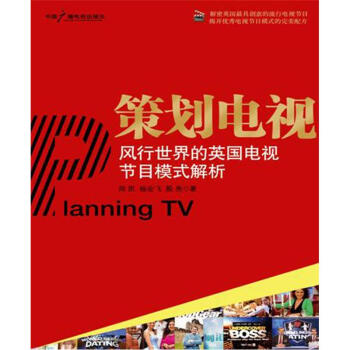



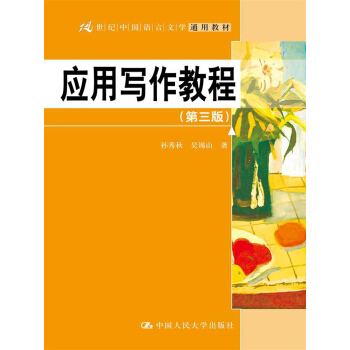
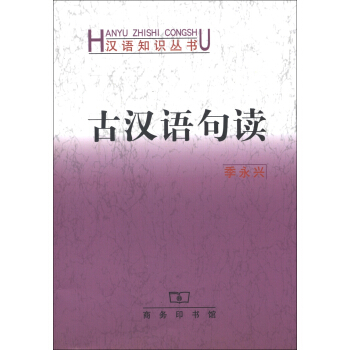
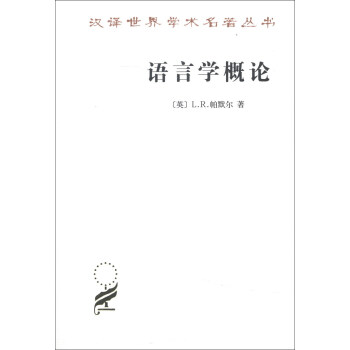
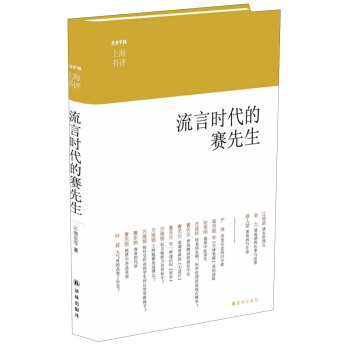
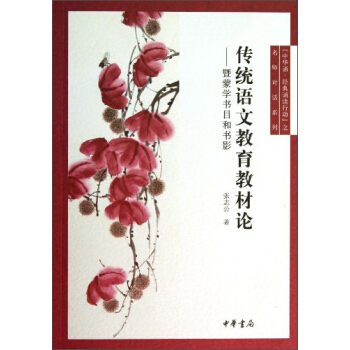


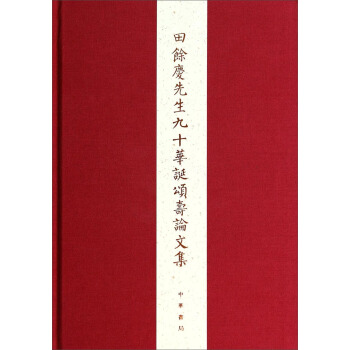

![数码人类学 [Digital Anthropology] pdf epub mobi 电子书 下载](https://pic.windowsfront.com/11561032/54499cadN07aa57d5.jpg)


![卡耐基口才训练 [Public Speaking And Infiuecing Men In Business] pdf epub mobi 电子书 下载](https://pic.windowsfront.com/11720266/559de83aN701ca7c6.jpg)
![多元智能理论与儿童的学习活动 [Project Spectrum:Early Leabning Activities] pdf epub mobi 电子书 下载](https://pic.windowsfront.com/11722382/55a316a1Nb7803dbb.jpg)
